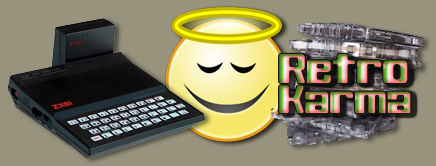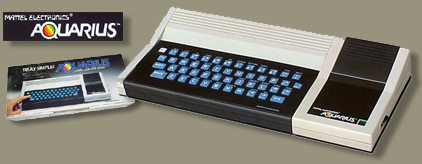A selection of our latest productsThe items below have all been added within the last 28 days....
 |
Emperor : Battle For Dune by Westwood Studios / EA Games
| |
 |
Halo 2 by Bungie
| |
 |
Diddy Kong Racing by Rareware *MINT
| |
 Retrogames fan Sean Kavanagh checks out some of the less popular home computers, and reminds us what they were actually like to live with back in the 1980s.
Retrogames fan Sean Kavanagh checks out some of the less popular home computers, and reminds us what they were actually like to live with back in the 1980s. 
.

Or not.
Santa did deliver a Commodore, just not the one I had hoped for. The wrapping paper came off and I was eyeball to eyeball with the Argos clearance offal known as the Vic 20 ‘Starter Pack’ (perhaps named thus, as you immediately started saving for your next computer when you got it). I smiled, so my mum wouldn’t be annoyed, but inside I was crestfallen. I thought perhaps she had bought it by mistake – after all both computers looked identical. The idea that it was all she could afford never crossed my ungrateful young mind. Plus, it wasn’t as if the Vic20 was a bad computer – it had a great keyboard, colour graphics and 4 channels of sound. No, the problem was that it was yesterday’s machine. Last Gen we’d call it nowadays, though in the playground my friends would call it far more cruel things (mostly relating to it being a shoe box full of dog faeces).
Setting aside the cassette of four free games that came in the ‘Starter Pack’, I opened up the copy of Perils of Willy that I’d also been bought. I played it most of Christmas day. It was an decent platformer with bright chunky graphics and amusing animation, but having played Manic Miner and Jet Set Willy on my friend’s Spectrum, I couldn’t help but feel it was distinctly second prize.
Finally, by New Year, when the last Quality Street was gone from the giant tin, I’d had enough of putting my Willy in Peril. I dug about for the four game free cassette that came with the Starter Pack. There was a hard as nails Frogger clone, a car racing game with treacle-like controls…and then I loaded Blitzkrieg.
The game started by randomly generating a crowded skyline of skyscrapers of different heights (which looked surprisingly art deco considering the low res graphics). At the top of the screen a little plane few left to right. As it reached the edge of the screen it would re-appear slightly lower on the other side – it would then repeat again, going lower and lower until it crashed. Not being a fan of instructions (they were for girls surely?) I started hitting random keys looking for the controls to pilot the plane. Nothing I did made it change course. Was the game broken? Finally I hit the spacebar and a bomb fell, knocking down half a skyscraper.
Frustrated I finally embraced my feminine side and decided to read the instructions to find the other controls.
But there were no other controls.
The spacebar was it. Your plane didn’t change course, so all you could do to stop it crashing was to drop bombs and try to flatten all the buildings below so it could land. I decided to give it just one more go, then another…and another. Great games hook you without you even realising, and despite its simplistic game play, Blitzkrieg had me hooked. I ran to get my brother to play the game with me, but he refused: ‘I’m not playing a game with only one button’ he moaned. So I played on alone.
Though it was new to me, Blitzkrieg was in fact an old game concept. Versions of the game had been around since the days of ZX81 and Commodore Pet, and it would often pop up as a bug ridden type-in in magazines such as Your Computer. But for my money the Vic20 version written by Simon Taylor was the best: the drone of the plane, the lovely colourful buildings and, most of all, the screen shaking crash if your plane ploughed into one of the skyscrapers. Blitzkrieg did have its ‘coffee Revel’ moments though: it was very very hard, and the frustration of inevitable death if you mistimed a bomb was immense.
But its simple game mechanic was fun - the sort of fun that is sometimes missing from today’s PS3 and 360 mega-games.
And yet today Blitzkrieg lies virtually forgotten – primarily because the game play wouldn’t work in the 3D first person that today’s gamers are force fed by publishers. And thanks to the events of 9/11 it’s probably safe to assume that no one beside Al Qaeda-soft is working on any new games about planes crashing into buildings. Even so, Blitzkrieg on the Vic20 stands as a testament to a simple idea well executed.



